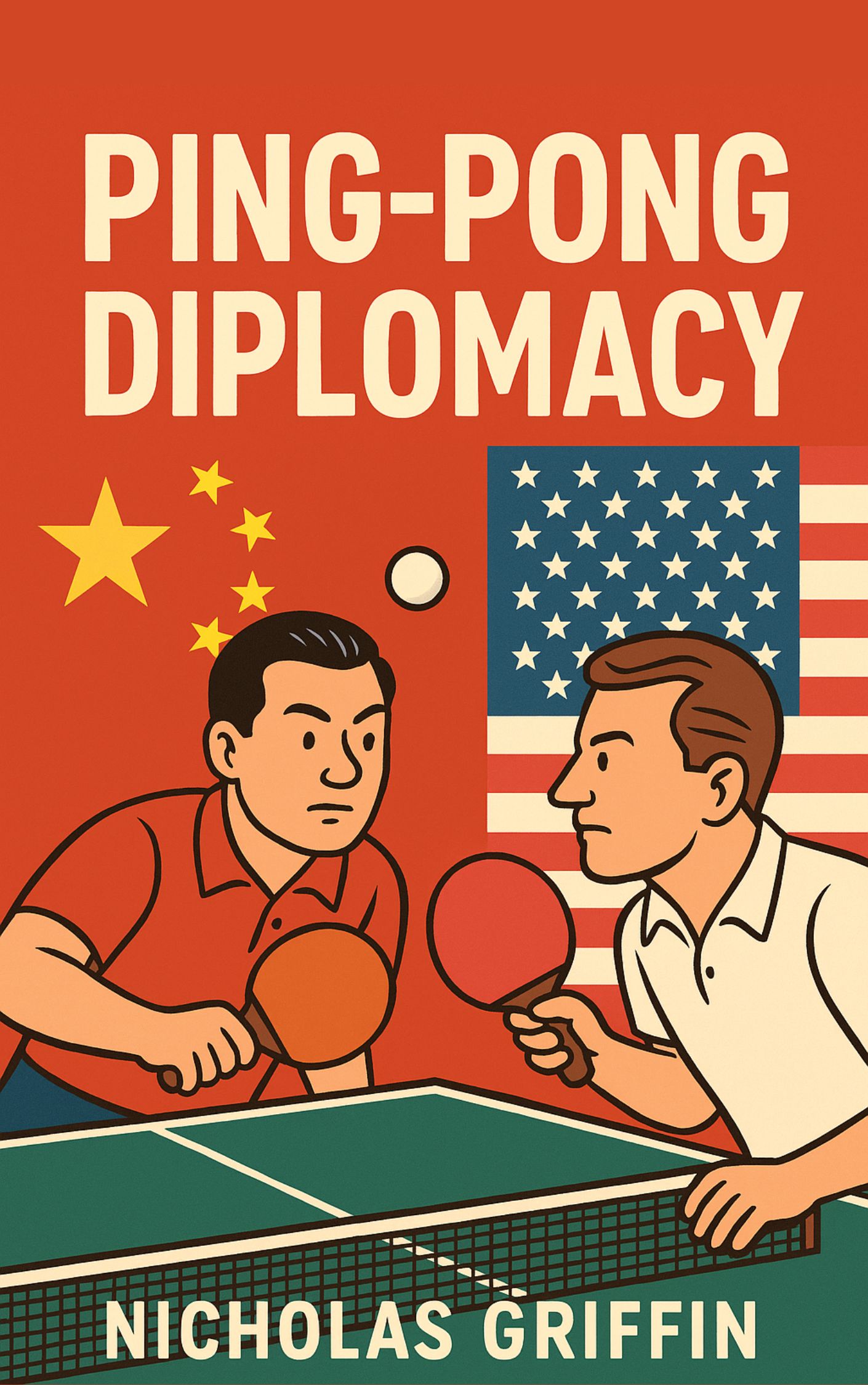Description
Ping-pong is often seen as a light and fun game. It is played at family gatherings, in basements, and in small clubs around the world. But in the twentieth century, this small white ball traveled far beyond the table. It carried messages of peace, connection, and diplomacy across continents. What began as an after-dinner amusement ended up opening the doors between two of the world’s most powerful nations: the United States and China.
The journey started with a man named Ivor Montagu. Born into one of England’s wealthiest families, Montagu was expected to follow tradition, hunt, shoot, and enjoy the life of an aristocrat. But his heart moved in a different direction. He became fascinated with socialism and drawn to ideas of equality. At the same time, he developed a strong love for the game of ping-pong. As a child, he convinced his father to buy him a table, and from then on, he played constantly.
Unlike cricket or soccer, ping-pong had no solid rules or structure at the time. It was treated more like a parlor trick. Montagu saw its potential. As a young man at Cambridge University, he organized tournaments, wrote down the rules of the game, and helped form official associations. These efforts shaped the modern version of table tennis as we know it today. Montagu also had another life: he secretly worked as a spy for the Soviet Union. In his eyes, sports were never just games; they were tools to connect societies, shift opinions, and change how nations saw each other.
While Montagu pushed the game in Europe, China was beginning to notice its value too. In the early years of the People’s Republic, leaders like Mao Zedong and Zhou Enlai looked for ways to strengthen the country’s image abroad. China was politically isolated and had very few allies. Many nations refused to recognize its government, still supporting the older nationalist leadership that had fled to Taiwan. China needed a way to be seen as legitimate on the world stage. Surprisingly, ping-pong became one of the tools to do that.
In the 1950s, the Chinese were not strong players, but they studied hard and invested in training. Soon, young athletes like Rong Guotan began to win international championships. When Rong became the first Chinese world champion in any sport, the entire nation celebrated. He was hailed as a hero, not only because of his skill but because he gave China a voice in international sports. Premier Zhou Enlai even told the players that they held more power than he did, because they could travel and meet people across the globe. Ping-pong was becoming more than a sport. It was becoming a symbol of national pride and diplomacy.
By the 1960s, China had grown into a world leader in table tennis. The government invested heavily in its teams, ensuring they trained in the best facilities and studied their opponents carefully. Matches were no longer only about competition; they were about showing discipline, strength, and the image of a new, rising China. In 1961, Beijing hosted the World Championships. Western journalists came expecting to see Japanese or European victories, but they were astonished by the speed, skill, and strategy of the Chinese players. The event was a triumph for China’s reputation, and it showed the world a side of the country that went beyond politics and poverty.
Meanwhile, relations between China and the United States remained frozen. For decades, the two countries barely spoke. The Cold War atmosphere created suspicion and hostility, and both sides viewed each other as enemies. Yet by the late 1960s, both nations had reasons to rethink their positions. The United States was stuck in the Vietnam War and needed support in Asia. China was facing tension with the Soviet Union and wanted to ease its isolation. The question was: who would make the first move?
The answer came at the ping-pong table. In 1971, during the World Championships in Nagoya, Japan, a young American player named Glenn Cowan found himself riding on the Chinese team’s bus. The atmosphere was tense. For years, Americans and Chinese had been told to avoid one another. But then, in a simple act of kindness, Chinese champion Zhuang Zedong stepped forward and handed Cowan a silk painting as a gift. Cameras captured the moment, and within hours, it was global news. Suddenly, the world was talking about friendship, not hostility.
This encounter, which may have been quietly planned by officials, was the spark of what came to be known as “ping-pong diplomacy.” Soon after, the Chinese government invited the American table tennis team to visit China. It was the first group of Americans officially welcomed to the country in over twenty years. The players toured historic sites, played exhibition matches, and even met Premier Zhou Enlai himself. The symbolism was powerful: if athletes could sit at the same table, maybe leaders could too.
In the United States, newspapers filled their front pages with stories about the visit. For many Americans, this was their first real glimpse of China beyond political slogans. Public opinion began to shift. People started to believe that building a relationship with China was possible, and even necessary.
Behind the scenes, political doors opened wider. Henry Kissinger, the US national security advisor, secretly traveled to Beijing to prepare the ground for talks. His meetings with Zhou Enlai laid the foundation for a historic visit. Soon after, President Richard Nixon announced that he would go to China himself. When Nixon finally stepped off the plane in Beijing in 1972, the world watched in shock. This was the same man who had once built his career on fierce anti-communist rhetoric. Now, he was shaking hands with Chinese leaders.
The visit was filled with symbolism. At state banquets, Chinese and American officials toasted each other. Nixon toured historic sites, spoke of cooperation, and even passed by Mao’s personal ping-pong table. Later, the Chinese team toured the United States, visiting cities, meeting with students, and even stepping inside the United Nations, where China now held its new permanent seat.
What had once seemed impossible was now reality. A sport once dismissed as trivial had broken through walls of silence and mistrust. Ping-pong had become a messenger of peace.
The story of ping-pong diplomacy is a reminder of how small things can carry great meaning. A paddle and a ball may not seem like instruments of history, but in the right moment, they can open doors that politics alone cannot. Ivor Montagu dreamed of using table tennis to bridge divides, and his vision became reality. The game built trust, changed opinions, and helped reshape global history.
What happened between China and the United States in the 1970s shows us that even the simplest activities can carry extraordinary power. Ping-pong became a tool for dialogue, for building understanding, and for creating a future where conversation replaced silence. It proves that sometimes, the most unexpected paths lead to the biggest breakthroughs.





